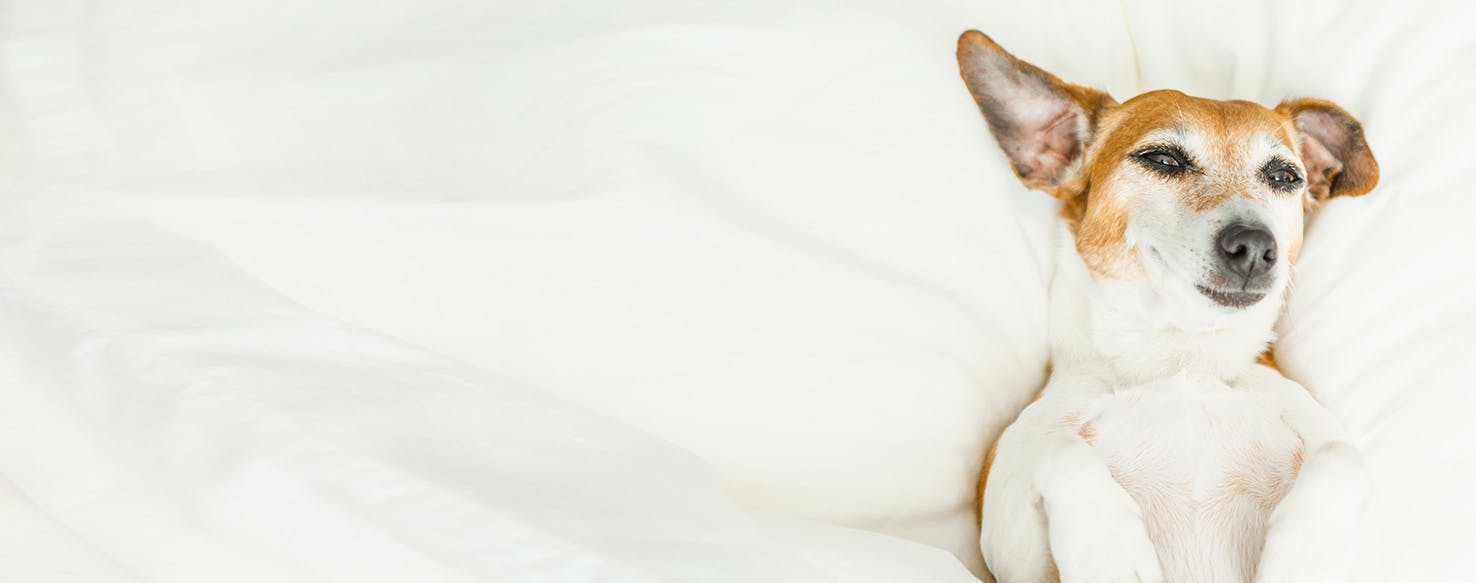- Home
- The Daily Wag!
- Behavior
- Why Do Dogs Try To Cover Babies With Blankets

Unusual
Irregular
The relationship between a child and dog is something special that many parents hope for when they bring home their new baby. You’ve probably seen the adorable videos of dogs covering babies with blankets and gently nudging them with their muzzles. It seems like the beginning of a lifelong bond. Is this behavior as heartwarming as it seems or is it something to be concerned about? Dogs are part of the family but it’s important to remember that dog behavior is different than human behavior. An action that we may view as sweet and caring may not be the dog expressing affection for his or her new human family member after all.
The truth is, dogs do not display this behavior with their own puppies. They may nudge puppies or gently pick them up to move them but they do not cover them up. However, they do display this type of burying behavior with food. Animal behaviorists often refer to this as “caching” and it is a common behavior among predators. In the wild, a dog’s ancestor may have ended up with more food than it could eat at that time so it would bury it to prevent other scavengers from stealing it. Modern dogs have adapted this behavior and many dogs bury their food around the house. Owners may find treats buried the backyard, in potted plants, and even the laundry basket. Many dogs even hide their favorite toys and items belonging to their owners.
There are many reasons for a dog to hide his snacks around the house. If given access to enough food, he may simply not be hungry enough to eat it at that time. He may also be insecure about eating it because of other dogs or new situations in the home. It’s not uncommon for newly rescued dogs to display this type of behavior. Whether Fluffy is hiding food, toys, or remote controls, he is simply attempting to keep these objects away from other dogs or people.
Despite any caching behavior, your pup may not necessarily view your child as a tasty snack. He might simply be recognizing that your bundle of joy is something valuable that should be protected. If your dog has a history of hiding his favorite squeaky toy or your favorite slippers, you might find him attempting to stash his new family member too. The seemingly adorable action of nudging blankets over the baby may be his way of keeping the child safe from harm.
Need advice about your pet's health?
Get answers fast from a veterinary professional 24/7 in the Wag! App.
Get Vet ChatAlthough it might appear to be a tender moment between baby and dog, you should discourage your pup from attempting to tuck in your little one. When introducing a new family member, it’s important to remind your dog that he needs to respect you and your baby’s personal space. It’s not uncommon for dogs who cache food or toys to become resource guarders who become increasingly aggressive about protecting their precious items. Discouraging caching lets your dog know that you’re in charge and that he’s in a safe environment where that type of behavior is unnecessary.
You can set your dog up for success by preparing for the baby’s arrival months in advance. Teaching him boundaries and commands such as “Leave It” and “Stay” will prepare him for safe interactions with his future family member. Many owners find that setting the nursery up as an “off-limits zone” allows the introduction of baby and dog to go at a slower, safer pace. Allowing the dog into the baby’s space only when asked reinforces this respect. If you’re having trouble enforcing new rules, a professional trainer can help teach your pooch the necessary skills to be the perfect family dog.
Dogs and kids often grow up to be inseparable, but the trust in this relationship takes time. Never leave your baby and dog together unsupervised. Accidents can and do happen and rather than risk the safety of baby or pup you can set boundaries within your home. Providing your dog with a kennel or a gated off area where he can still see the family at a safe distance is an excellent way to ensure everyone’s safety when you can’t keep a close eye on Fido. This also allows the dog to have a safe space of his own in case he feels overwhelmed by the changes in your household.
If your dog continues to exhibit concerning behaviors or his protective behavior escalates, you may need to consult a behavior specialist. A professional may have just the right tools to help your family grow in a safe and positive environment.
It can be difficult to remember that our furry friends are the descendants of wolves, but keeping inappropriate behavior in check is key to living safely with any animal. Nurturing the bond between a child a dog is a lot of doggone work, but your growing family will thank you!
Written by a Shiba Inu lover Patty Oelze
Veterinary reviewed by:
Published: 02/16/2018, edited: 01/30/2020
More articles by Patty Oelze

